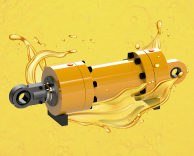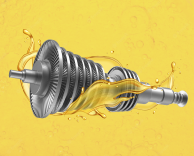The Importance of Proper Product Storage for Longevity and Performance
Introduction
Storing the products is a very important aspect in the usability, efficiency, and lifecycle of a product. And it works the same, not just for lubricating oil, but for any industry, where improper storage can heavily impact operations. Good housekeeping and a good storage system can help you avoid the potential for degraded and unusable lubricants. In the following article, we will be taking a closer look at the storage of a product, specifically lubricants!
Why Product Storage Matters
Good storage to keep the quality of the product. It helps prevent:
- Degradation of product qualities.
- Polluting Scratches External pollutants such as moisture and dirt.
- Money was lost on stock that couldn’t be used.
For lubricants, efficient management of storage facilities with the help of inventory management systems is crucial to ensure that the machinery is operated efficiently and that highly expensive and time-consuming breakdowns can be avoided.
The Role of Storage in Lubricant Performance
Lubricants are a critical component of machinery, promoting smooth running, minimizing friction and wear. But that works only as well as their quality, which can be affected by improper storage. The chemical properties of these solutions can be compromised, for example, by exposure to air, humidity, or temperature variations, with the result being:
- Reduced lubricity.
- Corrosion and wear of machinery.
- Increased maintenance costs.
Good inventory management for lubricants can monitor and control storage conditions by helping prevent these types of risks.
Common Risks of Improper Storage
If you fail to store the oil properly, here’s what you can expect:
- Oxidation: Hanging out in the air for a very long time, oil oxidizes, leaving behind sludge and varnish.
- Contamination: Water, dust, or anything else that gets into the bearing will impair the lubricant.
- Separation: Lubricants can separate from the additives they contain and become less effective.
- Degradation: Chemical breakdown can be sped up by extreme temperatures.
By employing an inventory system, these risks become more readily apparent and can be countered in a timely manner, thus significantly reducing product loss.
For More Information About Minimac Systems -Click Here.
Essential Guidelines for Lubricant Storage
1. Pre-Usage Inspection
Do the following prior to using lubricants that have been stored:
- Perform oil analysis to determine performance characteristics.
- Look for evidence of tampering, damage, or contamination, including discoloration and off odors.
- Discard any oil that does not pass a quality test.
Through an inventory management system, inspection routines can be simplified, documenting quality checks and usage history.
2. Maintaining Optimal Storage Temperature
An important factor to consider for maintaining lubricant properties is temperature control. Recommendations include:
- Mechanic & Gear Oil (all oils that are high additive): Do not store in a cold environment, risk of additive separation.
- Store at room temperature between 10°C and 30°C (50°F and 86°F) to avoid freezing and excessive heat.
Using inventory management, you can monitor warehousing conditions and take action if temperatures change.
3. Monitoring Shelf Life
All lubes have expiration dates, which are usually printed on the package. To ensure effective use:
- Use lubricants within their recommended shelf life.
- Rotate stock so the stock doesn’t get too old and expire.
- Mark containers well with purchase and expiry dates.
Shelf life is an essential sustainability component that an inventory management system is best equipped to monitor, by avoiding unnecessary waste and preserving an efficient rate of use.
Best Practices For Long-Term Storage
Selecting the Correct Storage Space:
- Lubricants should always be kept in dry, clean, and ventilated places.
- Do not expose to direct sunlight or temperature extremes.
Proper Container Management:
- Store in the original container and keep sealed to avoid contamination.
- Always use the originals to avoid compatibility issues.
Periodic Inspections:
- Inspect storage areas frequently for leaks, cross-contamination, and uniform temperature.
- Periodically evaluate the quality of the lubricant.
An inventory control system can help streamline these activities, offering a centralized way to track and manage storage requirements.
Environmental Considerations
Environmental considerations play a major part in the storage of the product. Key considerations include:
- Humidity: Storage: Dehumidify storage areas to avoid moisture infiltration.
- Prevent Spills: Implement spill containment procedures to contain spills.
- Regulatory Compliance: Follow local environmental standards for storage and disposal of lubricants.
A contemporary inventory management programme confirms that compliance is achieved through recording the storage conditions, reaction to spills, and the disposal of historical records.
Conclusion
Good storage practice is essential for protecting the quality and performance of these lubricants. It's with effective inventory management and the utilization of a robust inventory management system that industry can prevent expensive downtime, keep machines efficient, and extend the lifespan of these lubricants. By investing in the right storage, not only can operations run more smoothly, but accidents and environmentally damaging situations can be avoided. In the end, strong inventory management is the foundation for dynamic lubricant storage and usage.
Learn more about our services and industry insights by visiting our official LinkedIn page:Minimac Systems





